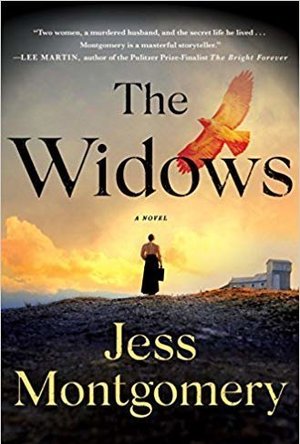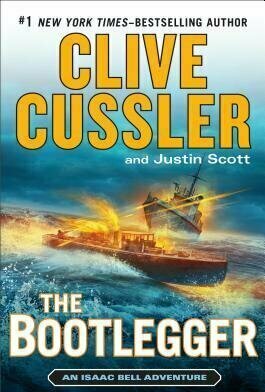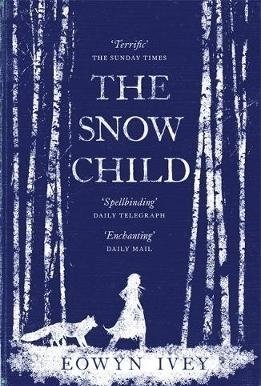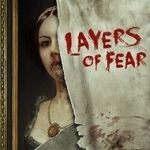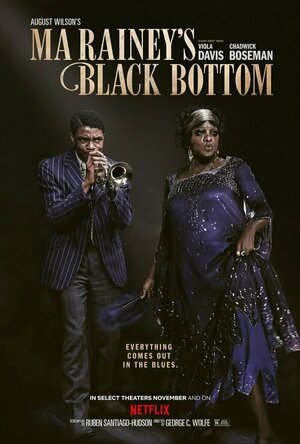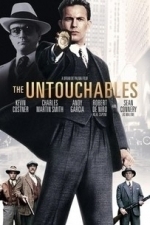Search

Gerhard Fieseler: The Man Behind the Storch
Book
The Fieseler Storch is the most famous slow-speed aircraft of the Second World War. A remarkably...
Sassy Brit (97 KP) rated The Widows in Books
Jun 5, 2019
The Widows by Jess Montgomery is inspired by the true story of Ohio’s first female sheriff. The plot delves into how two women fought greed and violence while overcoming the loss of a loved one.
The author noted, “This is a darker and deeper style of writing, much more than my other stories. For example, I examine the Pinkerton men and the violence they used. I read multiple books that talked about how these men would shoot up the striking camps. I put in this book quote by one of the Pinkerton men, ‘A real war, and then, rule of law won’t matter. Those miners who resist, why, we’ll put ‘em down like rabid dogs.’”
The protagonists Lily and Marvena are based on the real-life historical figures of Maude Collins, the first female sheriff in Ohio, and Mother Jones, the famous activist and labor organizer. Sheriff Daniel Ross, the husband of Lily is murdered and no one knows by whom. Those powerful in the town want to pin it on a coal miner, Marvena’s brother. She has something in common with Lily since she also lost her husband, but to a coal mining accident. Because the mine owners think she will be easy to control, Lily is appointed sheriff pending the next election. But having a mind of her own and a sense of justice she partners with Marvena to find the elusive murderer and Marvena’s missing daughter.
“I wrote both Lily and Marvena as tough. Lily is sensitive but is also a protector who wants to support her community. She keeps her emotions close to her heart. Marvena is fierce and persistent, but also has a tender streak. Although both women were wary of each other at first, they have a common goal to find out what happened. They end up with a strong friendship and recognize that each is balancing their own demons.”
Readers might be curious as to what is real and what is fiction. Montgomery commented, “In real life Collins had five children, and the person who killed her husband was known. I decided it would be interesting to have Lily take the sheriff position to find out who killed her husband. The similarity is that both women lost their husbands in the line of duty, both were appointed sheriff, and both were elected. The differences: Lily is eight years younger than Maude during that time period and she had only had two children.”
Historical facts are intertwined in this novel that also has strong female characters and an intriguing mystery. Readers get a glimpse into the 1920s-coal mining town in Appalachian Ohio as the author examines women’s rights, prohibition, and the life of a coal miner.
The author noted, “This is a darker and deeper style of writing, much more than my other stories. For example, I examine the Pinkerton men and the violence they used. I read multiple books that talked about how these men would shoot up the striking camps. I put in this book quote by one of the Pinkerton men, ‘A real war, and then, rule of law won’t matter. Those miners who resist, why, we’ll put ‘em down like rabid dogs.’”
The protagonists Lily and Marvena are based on the real-life historical figures of Maude Collins, the first female sheriff in Ohio, and Mother Jones, the famous activist and labor organizer. Sheriff Daniel Ross, the husband of Lily is murdered and no one knows by whom. Those powerful in the town want to pin it on a coal miner, Marvena’s brother. She has something in common with Lily since she also lost her husband, but to a coal mining accident. Because the mine owners think she will be easy to control, Lily is appointed sheriff pending the next election. But having a mind of her own and a sense of justice she partners with Marvena to find the elusive murderer and Marvena’s missing daughter.
“I wrote both Lily and Marvena as tough. Lily is sensitive but is also a protector who wants to support her community. She keeps her emotions close to her heart. Marvena is fierce and persistent, but also has a tender streak. Although both women were wary of each other at first, they have a common goal to find out what happened. They end up with a strong friendship and recognize that each is balancing their own demons.”
Readers might be curious as to what is real and what is fiction. Montgomery commented, “In real life Collins had five children, and the person who killed her husband was known. I decided it would be interesting to have Lily take the sheriff position to find out who killed her husband. The similarity is that both women lost their husbands in the line of duty, both were appointed sheriff, and both were elected. The differences: Lily is eight years younger than Maude during that time period and she had only had two children.”
Historical facts are intertwined in this novel that also has strong female characters and an intriguing mystery. Readers get a glimpse into the 1920s-coal mining town in Appalachian Ohio as the author examines women’s rights, prohibition, and the life of a coal miner.

English Country House Interiors
Book
A highly detailed look at the English country house interior, offering unprecedented access to...
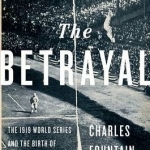
The Betrayal: The 1919 World Series and the Birth of Modern Baseball
Book
In the most famous scandal of sports history, eight Chicago White Sox players-including Shoeless Joe...
Phil Leader (619 KP) rated The Bootlegger in Books
Nov 11, 2019
The Bootlegger is the latest in the series of stories about the detective Isaac Bell from Cussler and Bell collaborator Justin Scott.
Time has moved on for Bell; it is now the early 1920s prohibition is in force and the loss of lives during the First World War has hit the Van Dorn detective agency hard. Faced with routine lawbreaking to smuggle and sell alcohol on the East Coast, and with lucrative government contracts being lost to new federal agencies, the struggle against crime has never been harder. And when Bell has to take over the role of head of the agency he faces a tough job.
Meanwhile the recent war in Europe has spread communist revolutionaries across the world, trying to destablise governments and bring about the fall of capitalism, following the example of the Russian Revolution. One resourceful operative sees the possibilities of bootlegging to finance his activities against America, but his masters are not so keen on the idea of making vast amounts of money, regardless of the use it is to be put to. But his fatal mistake is attracting the attention of the Van Dorns, who still stick by their motto - We Never Give Up. Ever.
You pretty much get what you expect with this book, more of the same from the previous Isaac Bell books. Personally I enjoy them, the insight into American early 20th century history is always a fantastic backdrop. Scott's seeming obsession with train timetables is kept to a small section here regarding moving a cargo from one place to another. There is still the full selection of large engined transport - fast cars, fast planes and in this one fast boats. There are exciting chases and shootouts, plots and subplots, ruthless villains and gangsters aplenty and the real motives of the villain do not become clear until the final showdown.
It is a shame that we know the identity of the villain more or less right from the start rather than the Van Dorns having to piece the clues together to unmask him, as in the previous novels. Although in this case it would have been hard to explain the conflict between his communist aims and capitalist means of obtaining them, which is the real engine at the heart of the plot.
Unlike Columbo Bell is not sure who his man is for quite a way through the book until realisation dawns about who he must be looking for. But I felt that he suddenly went from not knowing the actual identity of the villain to seeing through all his subterfuge far too quickly. There didn't seem to be a Columbo 'Just one more thing' moment where the vital clue or clever insight threw everything wide open. But perhaps it was time for the story to cut to the chase - and it certainly does that to a satisfying (although possibly not great) finale.
Overall I enjoyed the book, the pace was good and the set pieces very well written. However it was never going to challenge the reader in any real way. But then it's an escapist adventure story, why should it?
Time has moved on for Bell; it is now the early 1920s prohibition is in force and the loss of lives during the First World War has hit the Van Dorn detective agency hard. Faced with routine lawbreaking to smuggle and sell alcohol on the East Coast, and with lucrative government contracts being lost to new federal agencies, the struggle against crime has never been harder. And when Bell has to take over the role of head of the agency he faces a tough job.
Meanwhile the recent war in Europe has spread communist revolutionaries across the world, trying to destablise governments and bring about the fall of capitalism, following the example of the Russian Revolution. One resourceful operative sees the possibilities of bootlegging to finance his activities against America, but his masters are not so keen on the idea of making vast amounts of money, regardless of the use it is to be put to. But his fatal mistake is attracting the attention of the Van Dorns, who still stick by their motto - We Never Give Up. Ever.
You pretty much get what you expect with this book, more of the same from the previous Isaac Bell books. Personally I enjoy them, the insight into American early 20th century history is always a fantastic backdrop. Scott's seeming obsession with train timetables is kept to a small section here regarding moving a cargo from one place to another. There is still the full selection of large engined transport - fast cars, fast planes and in this one fast boats. There are exciting chases and shootouts, plots and subplots, ruthless villains and gangsters aplenty and the real motives of the villain do not become clear until the final showdown.
It is a shame that we know the identity of the villain more or less right from the start rather than the Van Dorns having to piece the clues together to unmask him, as in the previous novels. Although in this case it would have been hard to explain the conflict between his communist aims and capitalist means of obtaining them, which is the real engine at the heart of the plot.
Unlike Columbo Bell is not sure who his man is for quite a way through the book until realisation dawns about who he must be looking for. But I felt that he suddenly went from not knowing the actual identity of the villain to seeing through all his subterfuge far too quickly. There didn't seem to be a Columbo 'Just one more thing' moment where the vital clue or clever insight threw everything wide open. But perhaps it was time for the story to cut to the chase - and it certainly does that to a satisfying (although possibly not great) finale.
Overall I enjoyed the book, the pace was good and the set pieces very well written. However it was never going to challenge the reader in any real way. But then it's an escapist adventure story, why should it?
Hazel (1853 KP) rated The Snow Child in Books
May 30, 2017
A Fairytale
“Terrific”, “Spellbinding” and “Enchanting” are just three of the many words that critics have used to describe this book; they are also a slight exaggeration. Obviously it is a matter of personal opinion but this novel, whilst having an interesting storyline, was a little too drawn out and, at times… not exactly boring but not all that gripping.
Set in Alaska during the 1920s this is the story of a couple, Jack and Mabel, who, aside from a stillbirth, have not had any children despite their desperate longing. Now that they are both approaching fifty years of age they know that they will never be able to have a son or daughter of their own. One winter, during the first snowfall, the two of them on an uncharacteristic, spur of the moment impulse build a snowman next to their cabin. Rather than building a large snowman they make a smaller one in the shape of a girl, decorating her with scarves and mittens – they have made a snow girl.
Eowyn Ivey has based her novel on a Russian fairy tale, Snegurochka, which in English translates to The Snow Maiden. It was Arthur Ransome’s retelling, Little Daughter of the Snow, which inspired Ivey, but the general storyline is essentially the same, although some versions have alternative endings. For those who are familiar with Snegurochka and its variants will know that it does not end happily therefore it seems inevitable that The Snow Child will head in the same direction. However which ending will it most resemble?
Throughout the novel it is impossible to be absolutely sure that the little girl who turns up outside the cabin the day after the snowman has been built (and destroyed) is in fact the snow girl magically transformed into flesh and bone; or whether it is a lost child and the circumstance are purely coincidental. There is a third option: Jack and Mabel could be imagining things through their desperate longing, but this is easy to rule out.
The snow is understandably a key theme throughout the story. At the beginning the anticipated Alaskan winter is imagined as a “cold on the valley like a coming death”. Not only will it be unbearably freezing, Jack and Mabel will struggle to make do with their limited amount of food and supplies. After the arrival of the child the winter becomes a happy occasion. Jack and Mabel’s relationship improves and they become less isolated after befriending some neighbours. The only heartbreak is when the girl, Faina, disappears in the spring; but as she comes back as soon as it snows, winter becomes something to look forward to. Another snowy link in the story is Faina’s name, which she claims means “the colour on snow when the sun turns” in Russian. This also makes the idea of her truly being the snow girl more convincing.
The novel does predictably have an unhappy ending but the epilogue makes up for this by revealing the contentment of the remaining characters a few years into the future.
As already mentioned, The Snow Child was not a very gripping read, but it was a beautiful tale in the way that fairy tales, even those with unhappy endings, often can be.
Set in Alaska during the 1920s this is the story of a couple, Jack and Mabel, who, aside from a stillbirth, have not had any children despite their desperate longing. Now that they are both approaching fifty years of age they know that they will never be able to have a son or daughter of their own. One winter, during the first snowfall, the two of them on an uncharacteristic, spur of the moment impulse build a snowman next to their cabin. Rather than building a large snowman they make a smaller one in the shape of a girl, decorating her with scarves and mittens – they have made a snow girl.
Eowyn Ivey has based her novel on a Russian fairy tale, Snegurochka, which in English translates to The Snow Maiden. It was Arthur Ransome’s retelling, Little Daughter of the Snow, which inspired Ivey, but the general storyline is essentially the same, although some versions have alternative endings. For those who are familiar with Snegurochka and its variants will know that it does not end happily therefore it seems inevitable that The Snow Child will head in the same direction. However which ending will it most resemble?
Throughout the novel it is impossible to be absolutely sure that the little girl who turns up outside the cabin the day after the snowman has been built (and destroyed) is in fact the snow girl magically transformed into flesh and bone; or whether it is a lost child and the circumstance are purely coincidental. There is a third option: Jack and Mabel could be imagining things through their desperate longing, but this is easy to rule out.
The snow is understandably a key theme throughout the story. At the beginning the anticipated Alaskan winter is imagined as a “cold on the valley like a coming death”. Not only will it be unbearably freezing, Jack and Mabel will struggle to make do with their limited amount of food and supplies. After the arrival of the child the winter becomes a happy occasion. Jack and Mabel’s relationship improves and they become less isolated after befriending some neighbours. The only heartbreak is when the girl, Faina, disappears in the spring; but as she comes back as soon as it snows, winter becomes something to look forward to. Another snowy link in the story is Faina’s name, which she claims means “the colour on snow when the sun turns” in Russian. This also makes the idea of her truly being the snow girl more convincing.
The novel does predictably have an unhappy ending but the epilogue makes up for this by revealing the contentment of the remaining characters a few years into the future.
As already mentioned, The Snow Child was not a very gripping read, but it was a beautiful tale in the way that fairy tales, even those with unhappy endings, often can be.
Hazel (1853 KP) rated The Snow Child in Books
Dec 14, 2018
“Terrific”, “Spellbinding” and “Enchanting” are just three of the many words that critics have used to describe this book; they are also a slight exaggeration. Obviously it is a matter of personal opinion but this novel, whilst having an interesting storyline, was a little too drawn out and, at times… not exactly boring but not all that gripping.
Set in Alaska during the 1920s this is the story of a couple, Jack and Mabel, who, aside from a stillbirth, have not had any children despite their desperate longing. Now that they are both approaching fifty years of age they know that they will never be able to have a son or daughter of their own. One winter, during the first snowfall, the two of them on an uncharacteristic, spur of the moment impulse build a snowman next to their cabin. Rather than building a large snowman they make a smaller one in the shape of a girl, decorating her with scarves and mittens – they have made a snow girl.
Eowyn Ivey has based her novel on a Russian fairy tale, <i>Snegurochka</i>, which in English translates to <i>The Snow Maiden</i>. It was Arthur Ransome’s retelling, <i>Little Daughter of the Snow</i>, which inspired Ivey, but the general storyline is essentially the same, although some versions have alternative endings. For those who are familiar with <i>Snegurochka</i> and its variants will know that it does not end happily therefore it seems inevitable that <i>The Snow Child</i> will head in the same direction. However which ending will it most resemble?
Throughout the novel it is impossible to be absolutely sure that the little girl who turns up outside the cabin the day after the snowman has been built (and destroyed) is in fact the snow girl magically transformed into flesh and bone; or whether it is a lost child and the circumstance are purely coincidental. There is a third option: Jack and Mabel could be imagining things through their desperate longing, but this is easy to rule out.
The snow is understandably a key theme throughout the story. At the beginning the anticipated Alaskan winter is imagined as a “cold on the valley like a coming death”. Not only will it be unbearably freezing, Jack and Mabel will struggle to make do with their limited amount of food and supplies. After the arrival of the child the winter becomes a happy occasion. Jack and Mabel’s relationship improves and they become less isolated after befriending some neighbours. The only heartbreak is when the girl, Faina, disappears in the spring; but as she comes back as soon as it snows, winter becomes something to look forward to. Another snowy link in the story is Faina’s name, which she claims means “the colour on snow when the sun turns” in Russian. This also makes the idea of her truly being the snow girl more convincing.
The novel does predictably have an unhappy ending but the epilogue makes up for this by revealing the contentment of the remaining characters a few years into the future.
As already mentioned, <i>The Snow Child</i> was not a very gripping read, but it was a beautiful tale in the way that fairy tales, even those with unhappy endings, often can be.
Set in Alaska during the 1920s this is the story of a couple, Jack and Mabel, who, aside from a stillbirth, have not had any children despite their desperate longing. Now that they are both approaching fifty years of age they know that they will never be able to have a son or daughter of their own. One winter, during the first snowfall, the two of them on an uncharacteristic, spur of the moment impulse build a snowman next to their cabin. Rather than building a large snowman they make a smaller one in the shape of a girl, decorating her with scarves and mittens – they have made a snow girl.
Eowyn Ivey has based her novel on a Russian fairy tale, <i>Snegurochka</i>, which in English translates to <i>The Snow Maiden</i>. It was Arthur Ransome’s retelling, <i>Little Daughter of the Snow</i>, which inspired Ivey, but the general storyline is essentially the same, although some versions have alternative endings. For those who are familiar with <i>Snegurochka</i> and its variants will know that it does not end happily therefore it seems inevitable that <i>The Snow Child</i> will head in the same direction. However which ending will it most resemble?
Throughout the novel it is impossible to be absolutely sure that the little girl who turns up outside the cabin the day after the snowman has been built (and destroyed) is in fact the snow girl magically transformed into flesh and bone; or whether it is a lost child and the circumstance are purely coincidental. There is a third option: Jack and Mabel could be imagining things through their desperate longing, but this is easy to rule out.
The snow is understandably a key theme throughout the story. At the beginning the anticipated Alaskan winter is imagined as a “cold on the valley like a coming death”. Not only will it be unbearably freezing, Jack and Mabel will struggle to make do with their limited amount of food and supplies. After the arrival of the child the winter becomes a happy occasion. Jack and Mabel’s relationship improves and they become less isolated after befriending some neighbours. The only heartbreak is when the girl, Faina, disappears in the spring; but as she comes back as soon as it snows, winter becomes something to look forward to. Another snowy link in the story is Faina’s name, which she claims means “the colour on snow when the sun turns” in Russian. This also makes the idea of her truly being the snow girl more convincing.
The novel does predictably have an unhappy ending but the epilogue makes up for this by revealing the contentment of the remaining characters a few years into the future.
As already mentioned, <i>The Snow Child</i> was not a very gripping read, but it was a beautiful tale in the way that fairy tales, even those with unhappy endings, often can be.
Matthew Krueger (10051 KP) rated the Xbox One version of Layers of Fear in Video Games
Oct 26, 2019
Psychological Paintings
Contains spoilers, click to show
Layers of Fear- is scary, horrorfying, spooky, creepy, terrorfying, psychologically thrilling and more.
In Layers of Fear, the player controls a psychologically disturbed painter who is trying to complete his magnum opus, as he navigates through a Victorian mansion, with disturbing secrets about the painter being discovered. The gameplay, presented in first person perspective, is heavily story driven and often revolves mostly around puzzle-solving and exploration, as the game intensifies after each level while jump scares occur often.
The game is divided into six chapters with various items for the player to find in order to complete his work. The game is heavily dimmed, and there are objects that uncover certain aspects of the painter's history. While completing the painting, there is a letter that is slowly pieced together, which shows the origin of his masterpiece, and objects which explain the secret of the painter through dialogue flashbacks.
Lets talk about the plot and the three different endings.
Set in the 1920s United States, the unnamed protagonist returns home from a court hearing. After briefly exploring his empty house, he goes to his workshop to start working on his "magnum opus". After he adds the first layer, he starts having hallucinations about his past encounters.
There are three different endings featured in the game, each depending on the player's actions during the course of the game.
Ending 1 - The endless loop ending shows that the artist was working on a portrait of his wife as the masterpiece. He seemingly succeeds in creating the painting, and steps back to admire it only to see the figure of his wife devolve into a mutilated figure that proceeds to taunt him. Horrified, he grabs the painting and hurls it into a room full of identical paintings, all of which begin to laugh. It is revealed that the painter spent years shut in his house working on the same picture multiple times trying to perfect it in a cycle of obsessive mental deterioration. If the player enters the room where the artist threw the painting into, it is revealed that all the portraits are well made and resemble the artist's wife, but he can only see them as a disfigured mess. Returning to the studio, he unveils a blank canvas and begins working on the next painting, further continuing his self-destructive cycle as the screen fades to black.
Ending 2- The family ending is much the same, but this time he puts his child in the painting too. He then realizes the horrible mistakes he has made, and that he can never bring them back, no matter how many times he tries. He goes to the room upstairs and burns all his previous paintings along with his finished work before laying down and dying in the fire.
Ending 3- The selfish ending ends with a portrait of himself as his final attempt. Being finally satisfied, he decides to hang it in the room upstairs. The next shot goes to his painting on a display at a museum among other famous Victorian artists.
Their is also dlc for this game called Inheritance, which also has a good ending, bad ending and the true ending. I havent played the DLC so i wont spoil it because i havent played it.
Anways Layers of Fear is a grear game and I can't not wait until I play the DLC and Layers of Fear 2.
In Layers of Fear, the player controls a psychologically disturbed painter who is trying to complete his magnum opus, as he navigates through a Victorian mansion, with disturbing secrets about the painter being discovered. The gameplay, presented in first person perspective, is heavily story driven and often revolves mostly around puzzle-solving and exploration, as the game intensifies after each level while jump scares occur often.
The game is divided into six chapters with various items for the player to find in order to complete his work. The game is heavily dimmed, and there are objects that uncover certain aspects of the painter's history. While completing the painting, there is a letter that is slowly pieced together, which shows the origin of his masterpiece, and objects which explain the secret of the painter through dialogue flashbacks.
Lets talk about the plot and the three different endings.
Set in the 1920s United States, the unnamed protagonist returns home from a court hearing. After briefly exploring his empty house, he goes to his workshop to start working on his "magnum opus". After he adds the first layer, he starts having hallucinations about his past encounters.
There are three different endings featured in the game, each depending on the player's actions during the course of the game.
Ending 1 - The endless loop ending shows that the artist was working on a portrait of his wife as the masterpiece. He seemingly succeeds in creating the painting, and steps back to admire it only to see the figure of his wife devolve into a mutilated figure that proceeds to taunt him. Horrified, he grabs the painting and hurls it into a room full of identical paintings, all of which begin to laugh. It is revealed that the painter spent years shut in his house working on the same picture multiple times trying to perfect it in a cycle of obsessive mental deterioration. If the player enters the room where the artist threw the painting into, it is revealed that all the portraits are well made and resemble the artist's wife, but he can only see them as a disfigured mess. Returning to the studio, he unveils a blank canvas and begins working on the next painting, further continuing his self-destructive cycle as the screen fades to black.
Ending 2- The family ending is much the same, but this time he puts his child in the painting too. He then realizes the horrible mistakes he has made, and that he can never bring them back, no matter how many times he tries. He goes to the room upstairs and burns all his previous paintings along with his finished work before laying down and dying in the fire.
Ending 3- The selfish ending ends with a portrait of himself as his final attempt. Being finally satisfied, he decides to hang it in the room upstairs. The next shot goes to his painting on a display at a museum among other famous Victorian artists.
Their is also dlc for this game called Inheritance, which also has a good ending, bad ending and the true ending. I havent played the DLC so i wont spoil it because i havent played it.
Anways Layers of Fear is a grear game and I can't not wait until I play the DLC and Layers of Fear 2.
Sarah (7800 KP) rated Ma Rainey's Black Bottom (2020) in Movies
Jan 30, 2021
Boseman is amazing
Ma Rainey’s Black Bottom is the latest adaptation of the works of August Wilson brought to us by producer Denzel Washington, following on from the 2016 adaptation of Fences that earned Viola Davis a Best Supporting Actress Oscar. Here Washington hands over the directing reins to Tony award winner George C. Wolfe, while Viola Davis returns as the titular Ma Rainey.
Set in 1920s Chicago, the film follows a tense and fractious recording session with Ma Rainey and her backing band, old hands Toledo (Glynn Turman), Cutler (Colman Domingo) and Slow Drag (Michael Potts) alongside ambitious young horn player Levee (Chadwick Boseman). Tensions rise between Ma, Levee and the recording studio management (Jeremy Shamos as Irvin and Jonny Coyne as Sturdyvant) as each attempts to control the recording session and play songs that fit best with their own motives. Contributing to the frictions are Levee’s flirtation with Ma’s girlfriend Dussie Mae (Taylour Paige) and her Ma’s stuttering nephew Sylvester (Dusan Brown) as he attempts to introduce Ma’s signature song, Black Bottom.
Ma Rainey’s Black Bottom undoubtedly looks and sounds good. The cinematography and costumes are perfect and entirely in keeping with the 20s Chicago setting. And the blues music is captivating and beautifully made. To be quite honest I would’ve been quite happy to watch and listen to an entire film solely following the band and their music. However whilst it does look and sound good, it is so obviously a film adapted from a stage play and I’m afraid this isn’t a good thing. There’s a limited number of sets and virtually the entirety of the 90 minute run time is set within two rooms in the recording studio, which makes such a short film feel ridiculously drawn out. This isn’t helped by the huge reliance on very long scripted dialogue and conversational scenes. I can’t deny that the writing is good and is helped by strong performances from everyone involved, but there’s just too much dialogue. This might work on the stage, but on screen it doesn’t quite translate. There’s that much dialogue that the majority of scenes become too heavy and bogged down and sadly almost entirely forgettable. For me a film needs to balance dialogue with actual events and actions, and I’m afraid aside from the final act, nothing much happens here.
Fortunately this is at least boosted by some stellar performances. Viola Davis is brilliant as the spirited Ma Rainey, even if Ma herself as a character is rather unlikeable with some questionable motives for her actions and manners. The star however is the late Chadwick Boseman. While it’s very off putting to see how obviously thin and ill he was filming this, his performance is outstanding. He brings life and fun and heart to every scene he’s in and gives this film a massive boost. Even the drawn out dialogue heavy scenes become enthralling when he’s talking and the emotions on show are spectacular. Despite Viola Davis being the star as Ma, it’s Boseman that carried this film entirely on his shoulders. If he doesn’t win a posthumous Oscar for this, it’d be criminal.
Ma Rainey’s Black Bottom is a shining example of stellar performances, most notably Chadwick Boseman. It’s just a shame that the rest of the film doesn’t quite meet the high standards set by its stars.
Set in 1920s Chicago, the film follows a tense and fractious recording session with Ma Rainey and her backing band, old hands Toledo (Glynn Turman), Cutler (Colman Domingo) and Slow Drag (Michael Potts) alongside ambitious young horn player Levee (Chadwick Boseman). Tensions rise between Ma, Levee and the recording studio management (Jeremy Shamos as Irvin and Jonny Coyne as Sturdyvant) as each attempts to control the recording session and play songs that fit best with their own motives. Contributing to the frictions are Levee’s flirtation with Ma’s girlfriend Dussie Mae (Taylour Paige) and her Ma’s stuttering nephew Sylvester (Dusan Brown) as he attempts to introduce Ma’s signature song, Black Bottom.
Ma Rainey’s Black Bottom undoubtedly looks and sounds good. The cinematography and costumes are perfect and entirely in keeping with the 20s Chicago setting. And the blues music is captivating and beautifully made. To be quite honest I would’ve been quite happy to watch and listen to an entire film solely following the band and their music. However whilst it does look and sound good, it is so obviously a film adapted from a stage play and I’m afraid this isn’t a good thing. There’s a limited number of sets and virtually the entirety of the 90 minute run time is set within two rooms in the recording studio, which makes such a short film feel ridiculously drawn out. This isn’t helped by the huge reliance on very long scripted dialogue and conversational scenes. I can’t deny that the writing is good and is helped by strong performances from everyone involved, but there’s just too much dialogue. This might work on the stage, but on screen it doesn’t quite translate. There’s that much dialogue that the majority of scenes become too heavy and bogged down and sadly almost entirely forgettable. For me a film needs to balance dialogue with actual events and actions, and I’m afraid aside from the final act, nothing much happens here.
Fortunately this is at least boosted by some stellar performances. Viola Davis is brilliant as the spirited Ma Rainey, even if Ma herself as a character is rather unlikeable with some questionable motives for her actions and manners. The star however is the late Chadwick Boseman. While it’s very off putting to see how obviously thin and ill he was filming this, his performance is outstanding. He brings life and fun and heart to every scene he’s in and gives this film a massive boost. Even the drawn out dialogue heavy scenes become enthralling when he’s talking and the emotions on show are spectacular. Despite Viola Davis being the star as Ma, it’s Boseman that carried this film entirely on his shoulders. If he doesn’t win a posthumous Oscar for this, it’d be criminal.
Ma Rainey’s Black Bottom is a shining example of stellar performances, most notably Chadwick Boseman. It’s just a shame that the rest of the film doesn’t quite meet the high standards set by its stars.
Sarah (7800 KP) rated The Untouchables (1987) in Movies
Dec 16, 2020 (Updated Dec 16, 2020)
A little melodramatic
(not) Film #7 on the 100 Movies Bucket List: The Untouchables
As with most of the films on this list, The Untouchables is a film that has garnered a great deal of acclaim over the years, and yet if I’ve ever seen it, I’m ashamed to admit that I don’t remember it.
The Untouchables (1987) was directed by Brian De Palma and stars Kevin Costner as Eliot Ness, a treasury agent who recruits a group of fellow cops and agents to take down mob boss Al Capone (Robert De Niro) in Prohibition-era Chicago, with Ness and his agents soon becoming known as the “untouchables” after refusing large bribes. Sean Connery, Andy Garcia and Charles Martin Smith make up the rest of the Untouchables.
An American gangster film is a dime a dozen, there have been countless over the years and the 1920s and 30s are always featured fairly heavily, no doubt due to the large number of criminal gangs and mobsters around in that era. Personally whilst The Untouchables is a good film, I don’t think there’s a lot in this to make it particularly notable or outstanding above any of the others. It’s engaging and interesting, which it should be considering the subject matter – it is based on a true story after all. The entire production looks great too; the sets, costumes and locations are very well done and definitely look the part.
The issue with The Untouchables is it’s too melodramatic, too over the top and clichéd. This isn’t helped by Ennio Morricone’s score, which feels far too heavy handed, cheesy and out of place for the scenes. Even the open title credits is ridiculously over dramatic. You can definitely tell this film was made in the 80s and I’m afraid that’s not a good thing. There’s also some questionable acting from Kevin Costner, and while admittedly I’ve never been a big fan of his, the script and some of the almost cringeworthy scenes with Ness’s wife don’t help matters. And De Niro’s Capone pops up in scenes that feel rather random and forced during the first hour, and seem completely out of place with the rest of the story.
Despite this, The Untouchables is still fairly enjoyable and this is mostly due to Sean Connery’s Malone, the role that he won his only Oscar for. The Irishman, despite sounding very Scottish, injects some much needed heart, humour and spirit into the film and without him, this would have been a very lacklustre film indeed. Even Connery’s horrific Irish accent is a source of amusement, and without the character having been described as Irish, I would’ve just assumed he was Scottish.
Overall, I found The Untouchables to be a decent and entertaining gangster film as long as you can ignore the melodramatic overtones. But I’m not convinced that it’s anything memorable or above average, and if it even deserves a place on this list.
Update: So after having watched this film and headed to my Bucket List to scratch it off, I realised that the film on this list is actually The Intouchables, a French film from 2012 also known as Untouchable. Oops. So I’m afraid The Untouchables isn’t number 7 ticked off my bucket list after all 😆
As with most of the films on this list, The Untouchables is a film that has garnered a great deal of acclaim over the years, and yet if I’ve ever seen it, I’m ashamed to admit that I don’t remember it.
The Untouchables (1987) was directed by Brian De Palma and stars Kevin Costner as Eliot Ness, a treasury agent who recruits a group of fellow cops and agents to take down mob boss Al Capone (Robert De Niro) in Prohibition-era Chicago, with Ness and his agents soon becoming known as the “untouchables” after refusing large bribes. Sean Connery, Andy Garcia and Charles Martin Smith make up the rest of the Untouchables.
An American gangster film is a dime a dozen, there have been countless over the years and the 1920s and 30s are always featured fairly heavily, no doubt due to the large number of criminal gangs and mobsters around in that era. Personally whilst The Untouchables is a good film, I don’t think there’s a lot in this to make it particularly notable or outstanding above any of the others. It’s engaging and interesting, which it should be considering the subject matter – it is based on a true story after all. The entire production looks great too; the sets, costumes and locations are very well done and definitely look the part.
The issue with The Untouchables is it’s too melodramatic, too over the top and clichéd. This isn’t helped by Ennio Morricone’s score, which feels far too heavy handed, cheesy and out of place for the scenes. Even the open title credits is ridiculously over dramatic. You can definitely tell this film was made in the 80s and I’m afraid that’s not a good thing. There’s also some questionable acting from Kevin Costner, and while admittedly I’ve never been a big fan of his, the script and some of the almost cringeworthy scenes with Ness’s wife don’t help matters. And De Niro’s Capone pops up in scenes that feel rather random and forced during the first hour, and seem completely out of place with the rest of the story.
Despite this, The Untouchables is still fairly enjoyable and this is mostly due to Sean Connery’s Malone, the role that he won his only Oscar for. The Irishman, despite sounding very Scottish, injects some much needed heart, humour and spirit into the film and without him, this would have been a very lacklustre film indeed. Even Connery’s horrific Irish accent is a source of amusement, and without the character having been described as Irish, I would’ve just assumed he was Scottish.
Overall, I found The Untouchables to be a decent and entertaining gangster film as long as you can ignore the melodramatic overtones. But I’m not convinced that it’s anything memorable or above average, and if it even deserves a place on this list.
Update: So after having watched this film and headed to my Bucket List to scratch it off, I realised that the film on this list is actually The Intouchables, a French film from 2012 also known as Untouchable. Oops. So I’m afraid The Untouchables isn’t number 7 ticked off my bucket list after all 😆
